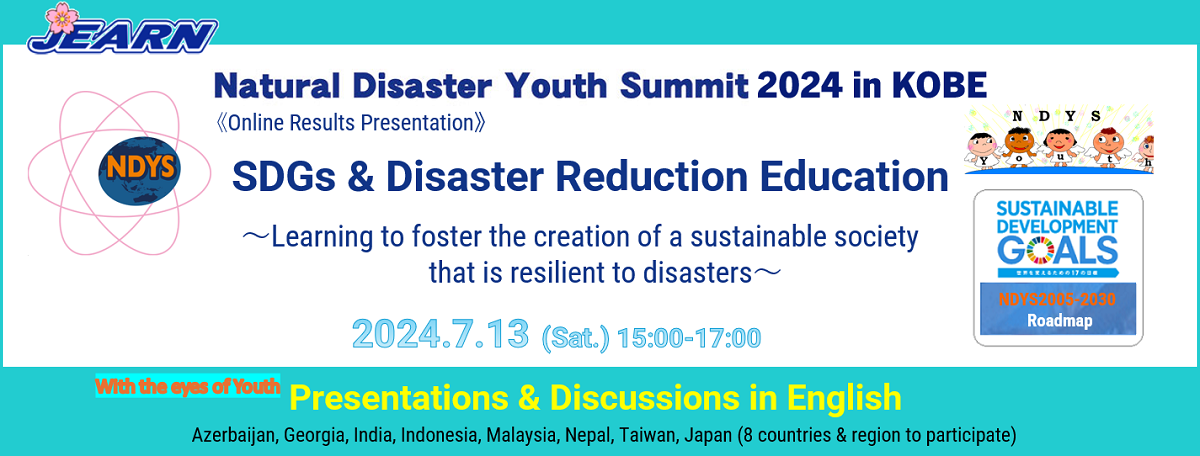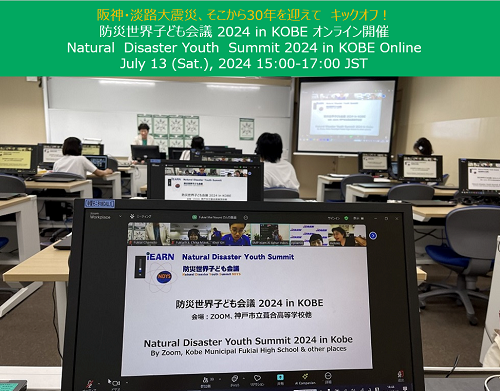 |
In May 2024, Natural Disaster Youth Summit (NDYS) project will celebrate
20 years.
On July 13, JEARN held the “Natural Disaster Youth Summit 2024 in KOBE” online as a summary of international collaborative learning,
where students from 8 countries and regions around the world communicated
with each other using digital technology to exchange issues that deepened
their research on disaster reduction. |
【Program】
◇Special Program |
| Our Proposals: 30 years after the Great Hanshin-Awaji Earthquake |
by Kobe Municipal Fukiai High School
|
|
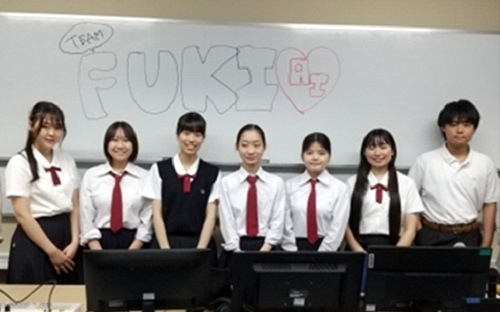
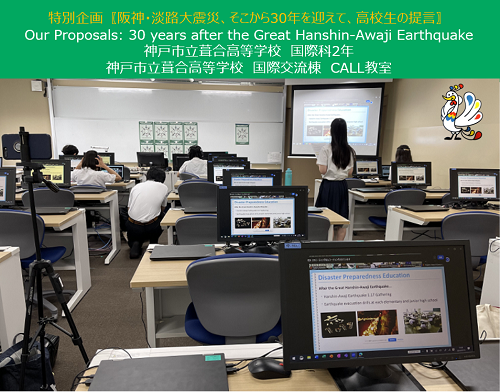
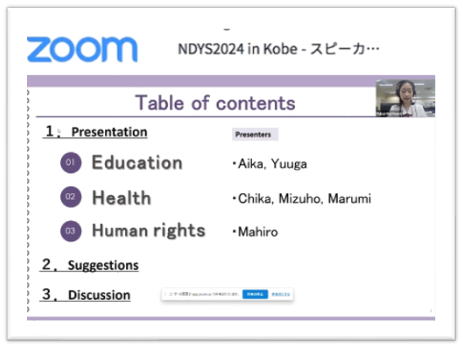
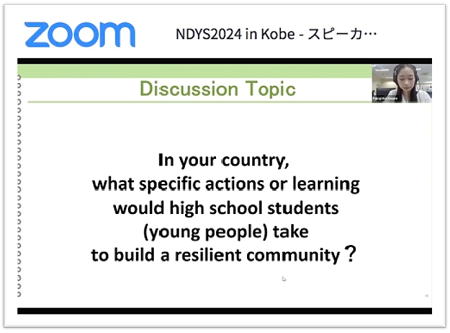
◇Online Photography |
In January 2025, on the occasion of the 30th anniversary of the Great Hanshin-Awaji
Earthquake, students in the second year of the International Studies Course
at Kobe Municipal Thatchiai High School, who had never experienced the
earthquake, formed a team in their Global Studies class and set out to
collect data and conduct research on how to become young leaders and supporters
to create a society that is resilient to natural disasters by applying
the lessons learned from the Great Hanshin-Awaji Earthquake to the three
fields of education, health, and human rights. From the field of education,
health, and human rights, they embarked on data collection and research
on how to become young leaders and supporters to create a society that
is resilient to natural disasters, drawing on the lessons learned from
the Great Hanshin-Awaji Earthquake.
| Even though the students are not old enough to have experienced the Great
Hanshin-Awaji Earthquake 30 years ago, they have learned its lessons and
experienced evacuation drills at elementary and junior high schools. They
learn from the past, select a theme, gather data, analyze and discuss it
from various angles, and propose solutions to problems. |
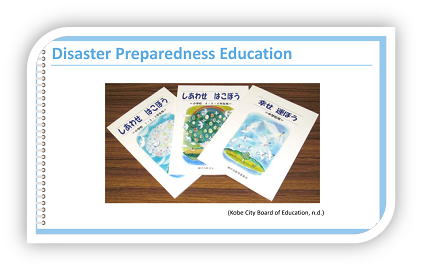
Discussion in English
 |
We exchanged opinions in English based on the topic, connecting countries and regions participating in the project via Zoom and realizing that each country has different problems such as floods and landslides even within the single topic of disasters. The atmosphere was tense at first, but thanks to MC N's efforts to create an atmosphere of active participation, the discussion in a universal language became an opportunity for exchange and ended with an unforgettable time. |
|
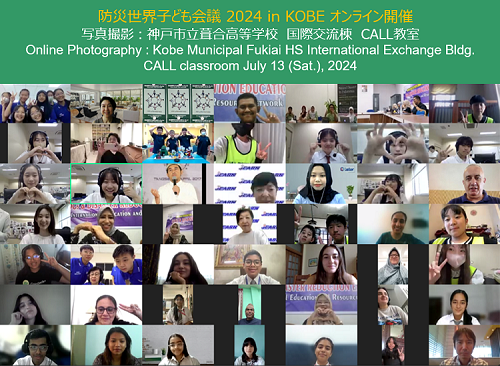
|
From all over the world, people were sending shouts of “Let's bring happiness!
and shouted to each other. About 100 people participated in the event.
From Japan, participants came from Tokyo, Yokkaichi, Sendai, and Kobe.
|
|
|
◇Guest Speech
| ”Build Back Better” in Aceh after 20 years of Tsunami disaster |
| Speaker: Wizar Putri Mellaratna (University of Malikussaleh, NDYS Facilitator, iEARN Indonesia) |
|
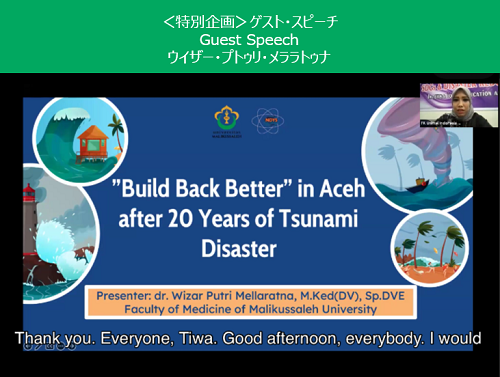
|
"Build Back Better” is an attempt to view natural disasters from a
global perspective and revitalize sustainable communities by considering
the environment, encouraging social resilience, and incorporating disaster
mitigation measures. Ms. Weiser, who experienced the tsunami caused by
the Sumatra earthquake as a high school student, said that during the chaotic
three-month period after the disaster, she attended the “World Children's
Conference on Disaster Reduction 2005 in Hyogo” international conference
and wanted to return home having learned the wisdom to protect herself
from tsunami, and from there she grew as a creator in the affected area
by working on her own. She is a symbol of Aceh's recovery.
|
|
|
◇From Around the World, Student Presentations
 |
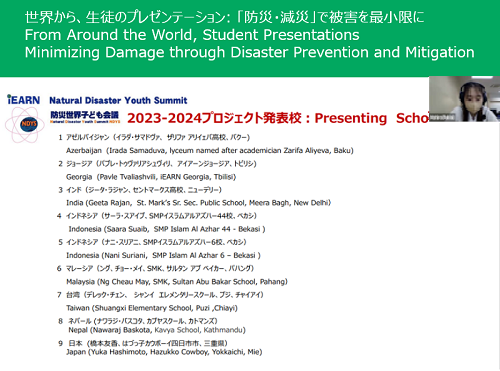 |
You never know when, where, or what will happen.
What kind of disaster preparedness do you have in this global digital age?
・The presentation will cover the results of research on disaster prevention,
mitigation, and recovery, in which participants prepare for and manage
the risks of various natural disasters in their own countries and regions
in advance!
・How can we cope with disaster risks caused by climate change? Presentation
on how we can change our behavior!
|
|
|
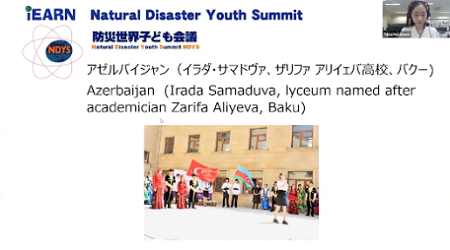 |
1. International Cooperation for Disasters (Azerbaijan)
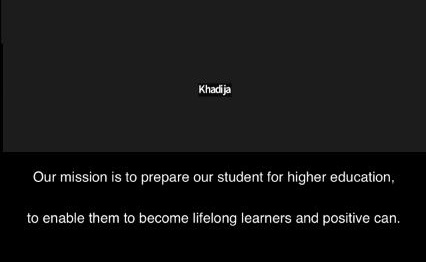 |
| |
|
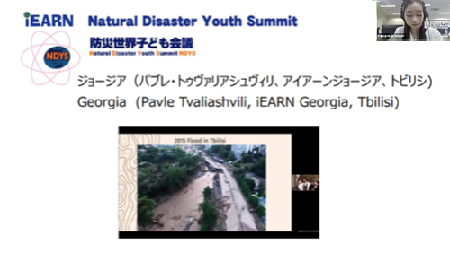 |
2. Measures against Landslides (Georgia)
 |
| |
|
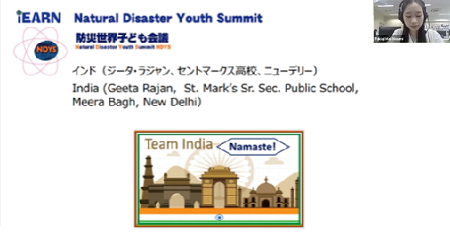 |
3. Natural Disaster Preparedness (India)
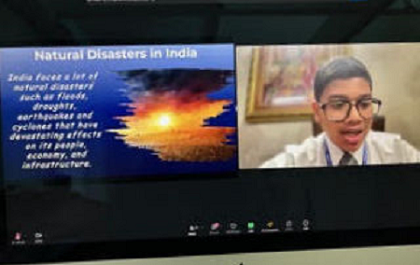 |
| |
|
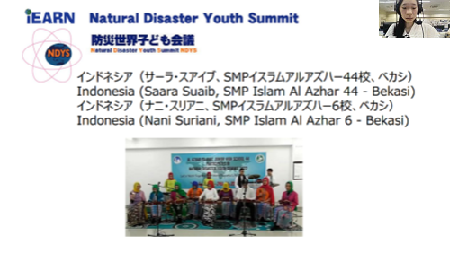 |
4. Disaster Prevention Education Program in Indonesia

|
| |
|
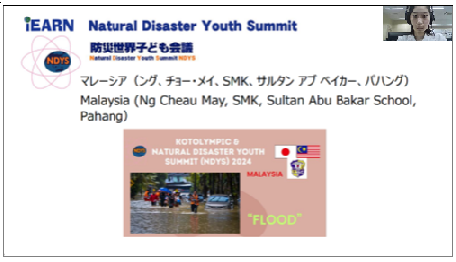 |
5. Flood mitigation strategies (Malaysia)
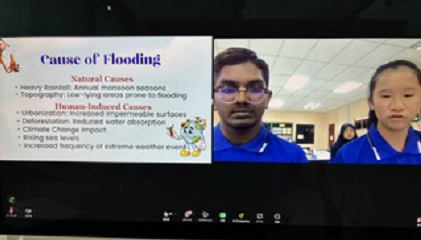 |
| |
|
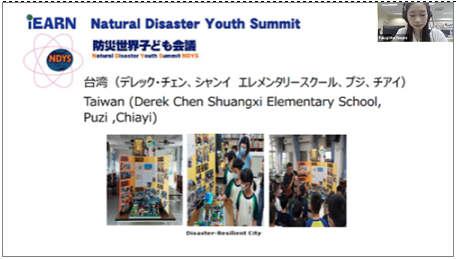 |
6. The research of Shuangxi Vil: Evacuation Shelter (Taiwan)
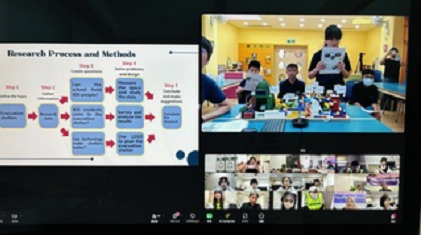 |
| |
|
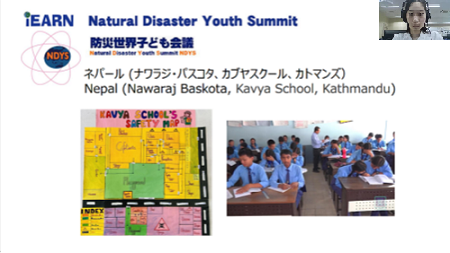
|
7. Measures against Earthquake (Nepal)
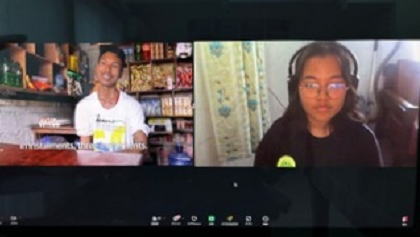 |
| |
|
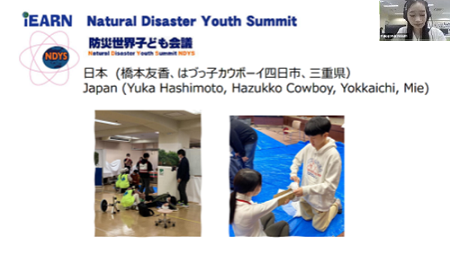
|
8. Disaster-resilient urban development "We are a disaster relief team!" (Japan)
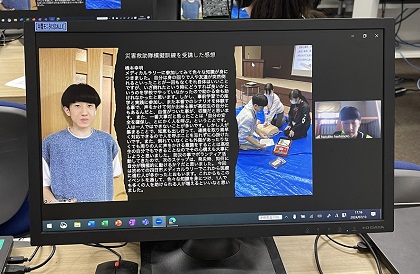 |
| |
|

◇General comment Commentator: Mr.Pavle Tvaliashvili, iEARN Georgia country coordinator |
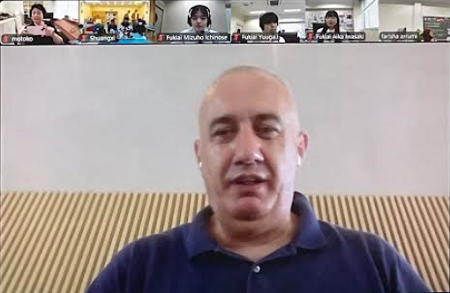 |
I thought it was wonderful that the NDYS has created a “place for disaster
prevention” where youth from around the world can disseminate their various
activities and learning. There were many solutions in your presentations
that could be applied in your respective countries and regions. In order
to prepare for the threat of natural disasters, which are becoming more
frequent in Japan and abroad, it is important to make “disaster prevention
and mitigation” permeate the culture of each country and region from the
perspectives of “disaster-resistant city planning” and “multicultural conviviality.
It would be nice if we could think together about what we can do to achieve
this. |
| |
|
◇NDYS2024 Declaration
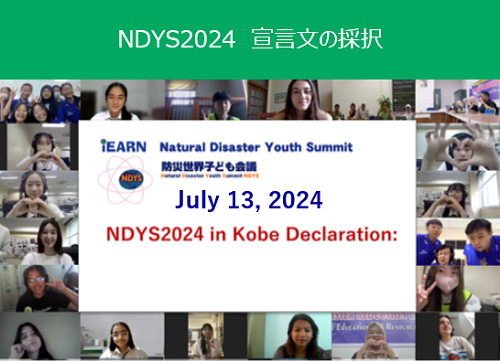
|
・Empowering community: Together creating a flood-resilient, vibrant society.
(Malaysia)
・Disaster mitigation is empowering.
Let's unite and strengthen each other in times of need.(India)
・Young activists must reinforce
international cooperation on humanitarian assistance in the field of natural
disasters from relief to development. (Azerbaijan)
・Share knowledge and educate others will help us from worse disaster.(Indonesia)
・We must teach children energy-saving and carbon-reducing methods, and take action to implement
environmental protection. We must also cultivate children's disaster prevention
literacy and establish the attitude of "life is disaster
prevention".(Taiwan)
・Enabling high school students to
become leaders in the event of a natural disaster to build a resilient
Japan.(Japan)
・Students and teachers can do more
by collaborating with students from other countries.(Georgia)
・Have the skills to act quickly when you see a disaster victim.(Japan)
・We as young leaders, will take an active role in disaster risk management and reduction initiatives and encourage our peers to do same. (Nepal)
‘We adopt the NDYS2024 Declaration.’
|
| ◇Closing |
|
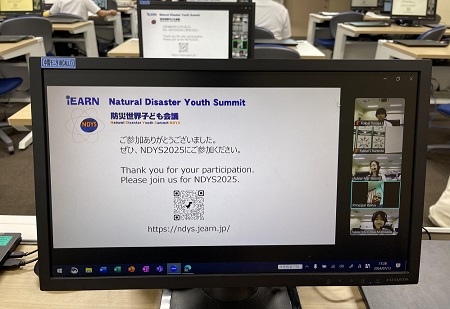 |
*The participants will gather in Niigata City from August 15 to 19, and
hold a face-to-face presentation at the “Koto Rinpik 2024 in Niigata” in
cooperation and collaboration with the Koto Rinpik Executive Committee. |
|
|
